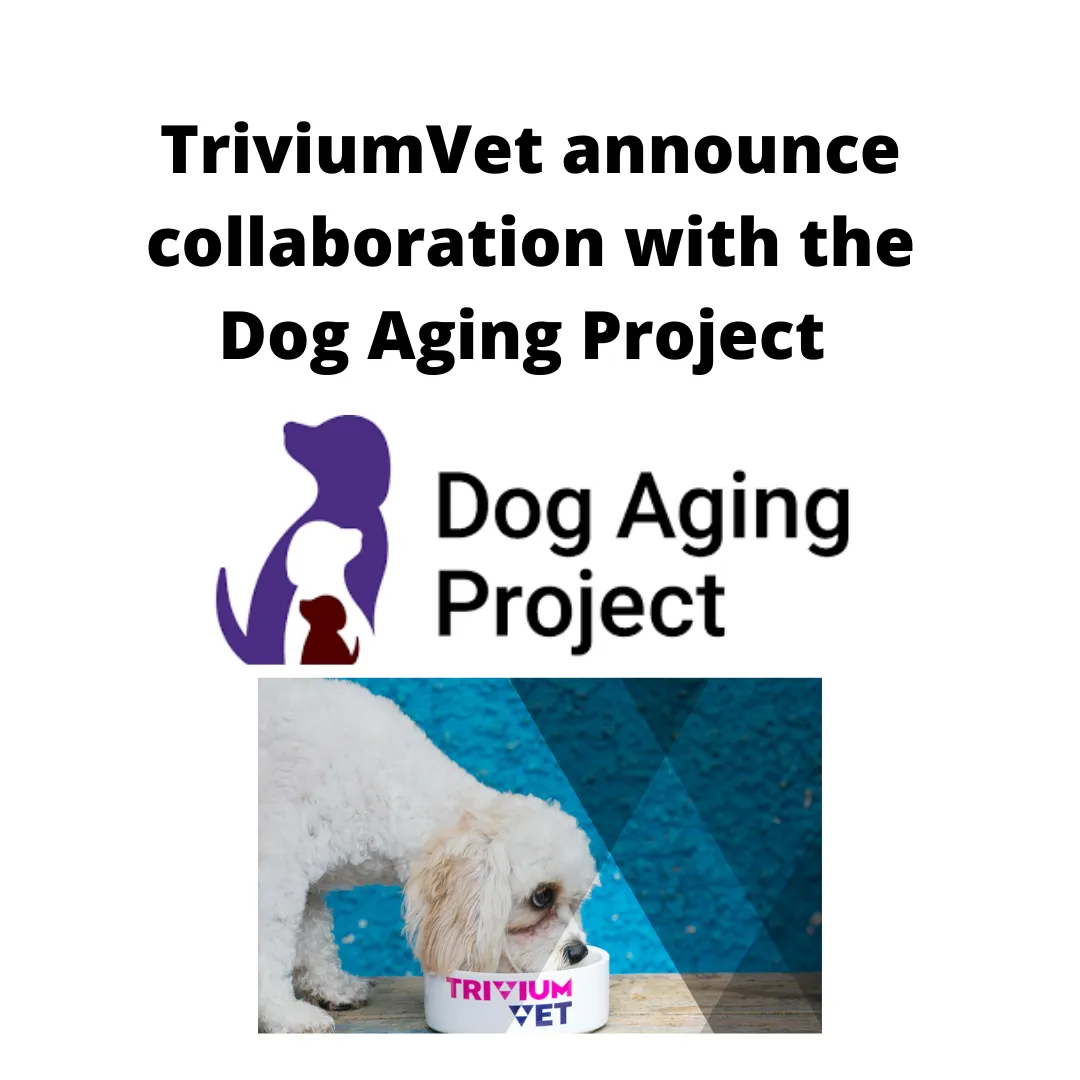
TriviumVet announce collaboration with the Dog Aging Project
TriviumVet, today announced an exciting research collaboration with the Dog Aging Project, TRIAD Trial.
What is the Dog Aging Project?
The Dog Aging Project is an innovative initiative based in the United States that brings together a community of dogs, owners, veterinarians, researchers, and volunteers to carry out the most ambitious canine health study in the world. The Dog Aging Project is a National Institutes of Health funded project which will follow tens of thousands of companion dogs for ten years to identify the biological and environmental factors that maximise healthy longevity.
The goal of the Dog Aging Project is to understand how genes, lifestyle, and environment influence aging. That information will then be used to help dogs and people increase health span; the period of life spent free from disease. A subset of participating dogs will be selected to be part of a new clinical study, Test of Rapamycin in Aging Dogs (TRIAD), to explore the potential of the drug Rapamycin to improve health span.
Key Facts about the Dog Aging Project can be found here Key Facts about the DAP
What is the TRIAD Trial?
The TRIAD Trial is a double-blind, placebo-controlled clinical trial of the drug Rapamycin. This study, being conducted as part of the larger Dog Aging Project research efforts, investigates the use of Rapamycin to potentially slow the aging process and prolong healthy life. TriviumVet have developed a novel Rapamycin formulation for dogs which will be used in the TRIAD Trial.
Dr. Matt Kaeberlein, co-director of the Dog Aging Project comments on the collaboration: “We are delighted to be working with TriviumVet and to have signed a collaboration agreement to use their novel veterinary formulation of Rapamycin for the TRIAD Trial.”
Key Facts about the TRIAD Trial can be found here Key Facts about TRIAD
Rapamycin background
Rapamycin, also called sirolimus, was originally discovered in 1964 after being isolated from the bacterium Streptomyces hygroscopicus in a soil sample from Easter Island, and was found to be an active metabolite with antibiotic and antifungal properties. It was later found to have immunosuppressive and anti-proliferative properties, which sparked a scientific interest in deducing the compound’s mechanism of action. Much research has been carried out evaluating the positive effect of Rapamycin in the areas of health span and lifespan[1], reducing cancer incidence[2], improving cognitive function[3], reversing immune declines[4], restoring stem cell function[5] and reversing cardiac decline[6] in aged subjects.
TriviumVet’s novel veterinary Rapamycin formulation
Recognising the potential therapeutic benefits of Rapamycin in cardiomyopathies in dogs and cats, TriviumVet have developed a novel veterinary formulation of Rapamycin which is currently undergoing clinical trials in client-owned pets of both species, having completed the initial safety and pharmacokinetic investigations.
Louise Grubb, TriviumVet CEO comments “The Rapamycin formulations we have developed will be first-in-disease treatments with a novel mode of action to treat chronic life-threatening conditions. We are excited about the additional opportunity to collaborate with the Dog Aging Project and further explore the potential of this drug.”
Research collaboration
As part of this collaboration, both the Dog Aging Project and TriviumVet will have access to new data to better understanding the potential of Rapamycin for both the treatment of disease and also the long-term age-related benefits.
The Dog Aging Project is actively enrolling dogs of all ages who live in the US into their longitudinal, observational research. Dogs meeting a number of eligibility requirements will be invited to join the TRIAD Trial from this group. For more information, please visit www.dogagingproject.org.
[1] (Kaeberlein, 2014)
[2] (Anisimov et al., 2011)
[3] (Halloran et al., 2012; Majumder et al., 2012)
[4] (Chen et al., 2009)
[5] Chen et al., 2009; Yilmaz et al., 2012)
[6] (Dai et al., 2014; Flynn et al., 2013; Neff et al., 2013)
